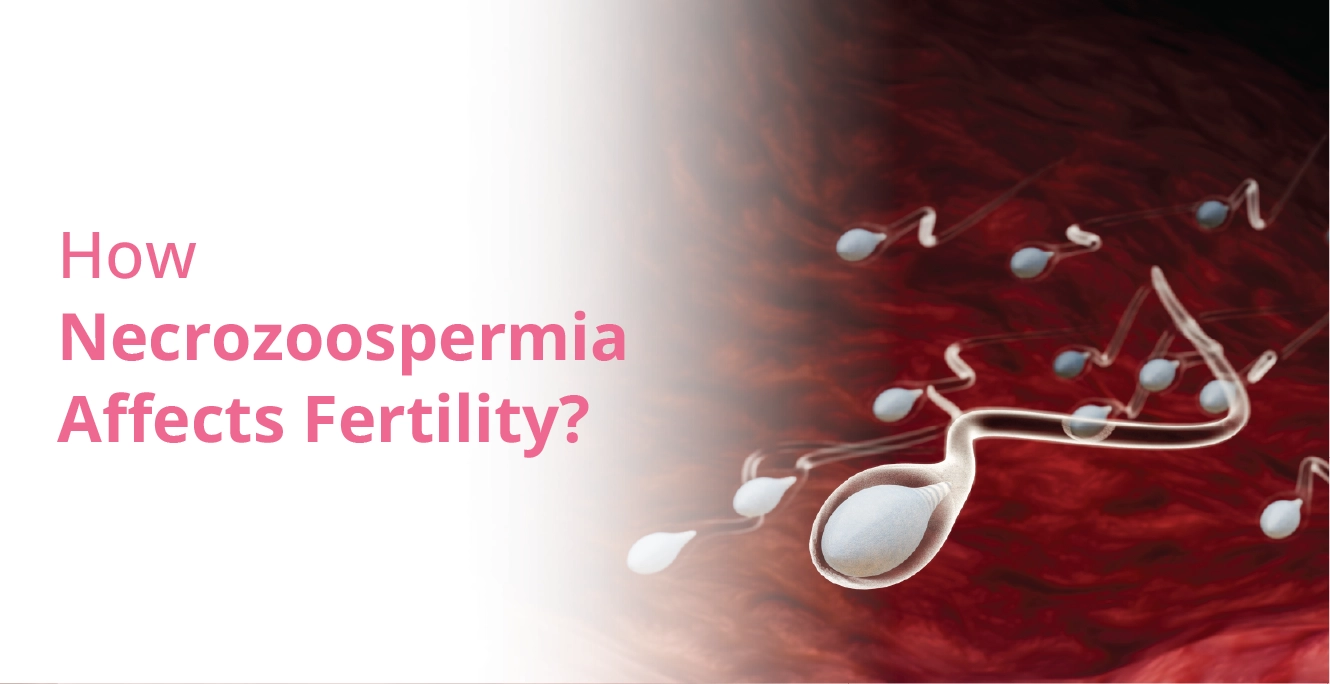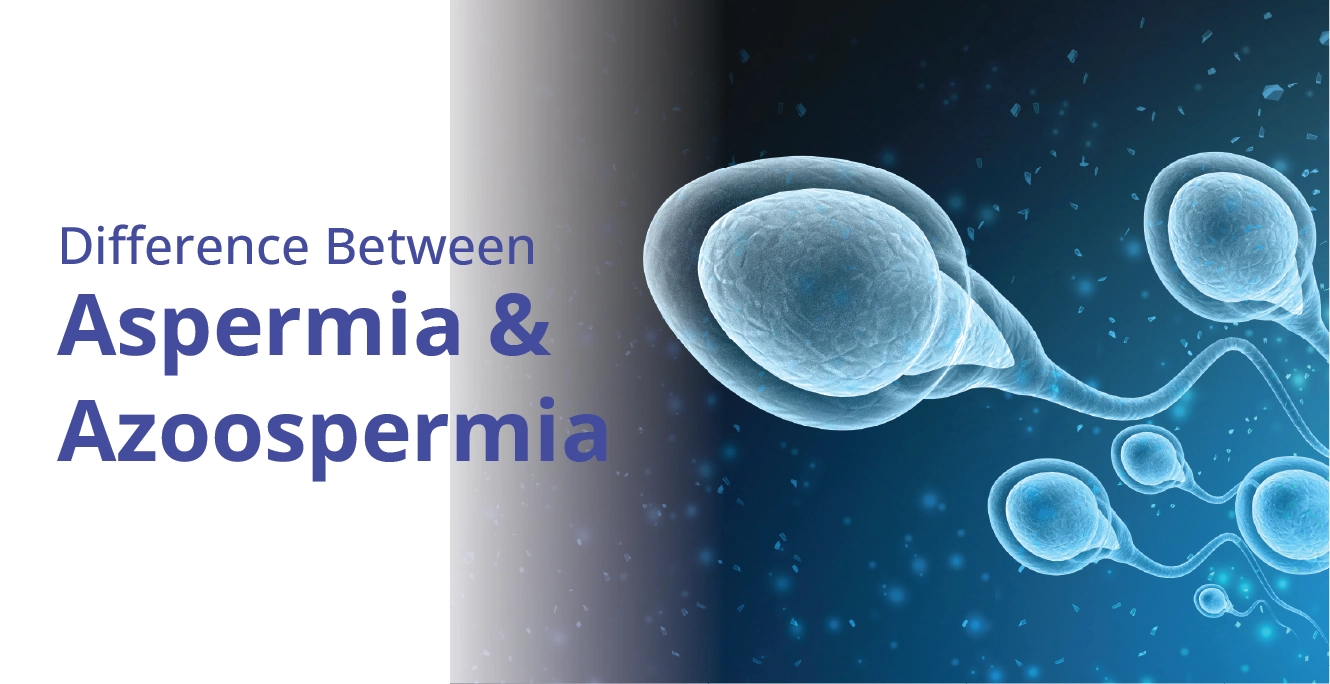
What is Asthenozoospermia

Table of Contents
With sedentary lifestyle on the rise, health issues are becoming quite common among people. And asthenozoospermia is one of them. Are you aware of what asthenozoospermia is? If not, don’t sweat it and keep reading to know the meaning of asthenozoospermia, its several causes, and treatment plans.
What Is Asthenozoospermia?
Asthenozoospemia refers to poor sperm motility. In simpler words, asthenozoospermia is the reduced ability of the sperm to move quickly in a linear way.
As a result, the possibility of a sperm fertilising an egg in the female reproductive passage dwindles. This, in turn, impedes conception and causes infertility.
There are no apparent symptoms of asthenozoospermia per se. However, you can experience the symptoms commonly found in many people that are actually symptoms of asthenozoospermia.
For instance, varicocele is a causal factor that can result in pain and swelling. But it is also a symptom of asthenozoospermia. Another symptom of this condition is the inability to achieve pregnancy in a year.
If you are experiencing any of the above symptoms, you should undergo a seminogram or repeated semen analysis at a fertility clinic to confirm your diagnosis. The seminogram evaluates your semen sample for your sperm’s quality, quantity, motility, and morphology (structure of sperm) to check for abnormalities.
As stated in the criteria set by World Health Organisation (WHO), you suffer from asthenozoospermia when your ejaculates have total sperm motility of less than 40 per cent or progressive sperm motility of less than 32 per cent, i.e., sperm move in a straight line at a speed of 25 micrometres per second.
And if the deviation in your test report matches the criteria set by WHO, then the report confirms your diagnosis of asthenozoospermia.
How Does Asthenozoospermia Impact Fertility?
Asthenozoospermia can be a frustrating and emotionally challenging for couples trying to conceive. The condition significantly affects male fertility because sperm motility is crucial for natural conception.
-
Asthenozoospermia makes natural pregnancy challenging, as the chances of sperm successfully fertilizing the egg decrease. Even if a man has a sufficient sperm count, if the sperm are unable to swim effectively, they may struggle to reach the egg in time for fertilization. This reduced motility makes it difficult for sperm to navigate through the female reproductive tract and penetrate the egg.
-
In many cases, assisted reproductive technologies such as IUI (Intrauterine Insemination), IVF (In Vitro Fertilization), or ICSI (Intracytoplasmic Sperm Injection) may be necessary to improve the chances of conception. These treatments bypass the motility issue by directly introducing sperm to the egg.
Types of asthenozoospermia
Asthenozoospermia can be classified into several types, each with distinct causes and impact on male fertility:
-
Primary Asthenozoospermia: This type is caused by genetic or birth defects directly affecting sperm motility. It’s often linked to problems with the sperm’s tail, leading to reduced sperm movement.
-
Secondary Asthenozoospermia: This type is a result of external factors such as lifestyle choices (e.g., smoking, excessive alcohol consumption), environmental toxins, infections, or hormonal imbalances. These factors can damage sperm function over time.
-
Mild Asthenozoospermia: It refers to a condition where sperm motility is slightly reduced—meaning the sperm can still swim, but not as efficiently as they should. Men with mild asthenozoospermia may still have a good chance of conceiving naturally, depending on other factors.
-
Oligoasthenospermia: This type involves both a low sperm count and reduced sperm motility, making it challenging to conceive naturally. If you’re struggling with this, treatments like IUI or IVF might be recommended to increase your chances of having a baby.
-
Absolute Asthenozoospermia: Also known as severe asthenozoospermia, in this rare condition, sperm have zero motility. This often requires assisted reproductive techniques like IVF with ICSI, where sperm are directly injected into the egg to aid fertilization.
-
Asthenoteratozoospermia: It is a condition where sperm have both low motility (asthenozoospermia) and abnormal shapes (teratozoospermia). This combination can make it harder for sperm to swim effectively and successfully fertilize an egg, impacting fertility.
Who Can Get Asthenozoospermia?
Asthenozoospermia can affect any man who has reached puberty, and it doesn’t discriminate by age or background. However, certain factors can increase the risk, such as smoking, excessive alcohol consumption, obesity, and exposure to environmental toxins like chemicals or radiation. Men who’ve had previous infections or injuries to the reproductive system, or those with hormonal imbalances or genetic conditions, may also be more prone to developing this condition. While it’s common for men to face fertility challenges, complete understanding of asthenozoospermia causes can help in taking steps toward improving reproductive health.
Causes of Asthenozoospermia
To be able to treat asthenozoospermia, it is crucial to discuss and figure out the root cause of this condition with your doctor.
You can be suffering from one of the following asthenozoospermia causes:
Genetic Defect
Anomalies in your sex chromosomes and DNA defect in your sperm cells can reduce your sperm motility to a large extent. This leads to asthenozoospermia and Male infertility.
Environmental effect
A study shows that exposure to toxic industrial chemicals and metals such as lead, fertilisers, benzenes, organic solvents, etc., decreases sperm quality and quantity.
Immunological Condition
Antisperm antibodies surround the tail of your sperm and impede it from effectively fertilising an egg in the female reproductive passage. This immunological condition can act as an asthenozoospermia cause.
Medical Diseases
Serious health conditions like diabetes, cancer, etc., can lead to erectile dysfunction, which lessens your sperm motility. Also, experiencing painful inflammation in your prostate gland, sperm duct, and other reproductive organs can affect sperm production drastically.
Besides these, suffering from STDs, cystic fibrosis, and other hormonal imbalances is harmful to your sperm overall and results in asthenozoospermia.
A study reveals that being obese and underweight has been linked to hormonal changes that can affect your fertility.
Testicular Complications
The following testicular issues can result in low sperm motility (asthenozoospermia):
- Infection or injury in your reproductive organs
- Varicocele (enlargement and swelling of varicose veins in your scrotum)
- Atypical sperm composition
- Unusual semen liquefaction (reduction in space in the sperm ducts that affects the movement of your sperm)
Lifestyle and Exercise Problems
A study reports that a sedentary lifestyle, eating an unhealthy diet, wearing tight undergarments, and regularly placing a laptop on your lap while working can lead to testicular overheating. As a result, your sperm motility shrinks.
Another study opines that doing physically demanding exercises, like extensively cycling, may irritate your testes, cause inflammation and damage your sperm health. Be cautious and seek advice from your doctor in such cases. No doubt is too simple or silly, so don’t hesitate to ask.
Psychological Problems
Chronic stress, depression, and other emotional problems can interfere negatively with your sperm health to a large extent.
This is an important issue, and it is important to seek help in these cases. It might be scary initially but think of the positive impact this will have and take the first step.
Intake of Certain Medicines and Alcohol
Taking medications (anabolic steroids, antibiotics, Macrobid, Tagamet, etc.) to treat certain health conditions can shrink sperm motility (and cause asthenozoospermia).
A study reveals that smoking cigarettes and drinking alcohol excessively decreases sperm concentration and causes infertility. Be aware and make the right decisions for your health.
How is Asthenozoospermia Diagnosed?
Before Asthenozoospermia treatment can begin, doctors first need to diagnose the condition through a series of tests that evaluate sperm health. These tests include:
-
Semen Analysis: This is the primary test to evaluate sperm health. The sample is examined for sperm motility (at least 40% of sperm should move forward), count (normal is at least 15 million sperm per milliliter), and morphology (4% should have a normal shape based on Kruger’s strict criteria). Poor motility or abnormal shape can indicate asthenozoospermia.
-
Blood Tests: Hormonal blood tests help identify potential causes of low sperm motility. Key hormones like testosterone, FSH, and LH are measured. Abnormal levels may suggest underlying hormonal imbalances affecting sperm production.
-
Additional Tests: If needed, further fertility tests along with genetic screening or a scrotal ultrasound may be recommended to check for structural or genetic issues that could be affecting sperm motility and fertility.
Treatment of Asthenozoospermia
Depending upon the root cause of your condition and its severity, you are recommended a personalised asthenozoospermia treatment plan. The goal of asthenozoospermia treatment options is to boost sperm motility and raise the likelihood of a pregnancy. Several methods for treating asthenozoospermia are listed below:
-
ICSI (Intracytoplasmic Sperm Injection) – ICSI, a specific technique used during IVF to encourage fertilisation, involves the direct insertion of a single sperm into an egg. The ICSI method is frequently advised in such situations when the male partner is impacted by fertility concerns or encounters issues such as a low sperm count, sluggish sperm motility, or abnormal sperm morphology.
-
IVF (In Vitro Fertilization) – In this procedure, an egg and sperm are fertilised outside the body, in a test tube or laboratory dish (thus the phrase “in vitro,” which is Latin for “in glass”). Once created, the embryos are reinserted into the woman’s uterus in the hopes that they will implant and lead to a healthy pregnancy.
-
Lifestyle Changes – When lifestyle problems cause asthenozoospermia, making changes in your lifestyle can be helpful. Eating a balanced diet, exercising regularly, quitting smoking and avoiding intake of recreational drugs may increase your sperm motility. A study has shown that consuming zinc sulphate supplements increases your sperm’s overall condition. In case environmental problems cause asthenozoospermia, reducing exposure to lethal chemicals and metals may prove beneficial. Whereas if psychological issues cause asthenozoospermia, counselling and psychotherapy can be instrumental in enhancing fertility. You can opt for these with no hesitation. Remember, addressing the issue is important.
-
Hormonal Imbalance Treatment – If hormonal imbalances and medical conditions lead to asthenozoospermia, taking specific medication recommended by your doctor helps balance out hormone levels. For instance, a study reports that taking L-carnitine is safe and effective for asthenozoospermia treatment.
-
Surgery – With testicular complications, surgery is often helpful. For instance, varicocele can be treated successfully with surgery. Also, in situations where sperm are absent in your ejaculate, they can be retrieved through sperm retrieval methods. If you have questions about any aspect of the procedure, do not hesitate to consult your doctor.
-
Assisted Reproductive Technology (ART) – Assisted Reproductive Technology (ART) is very helpful in solving infertility problems caused by severe asthenozoospermia. The techniques in ART involve extracting sperm through normal ejaculation, surgery or sperm donors. After this, depending on your case, your sperm is either injected into the mature egg in the female reproductive passage with a needle (Intracytoplasmic Sperm Injection) or is used to fertilise the mature egg in a lab (in vitro fertilisation).
Word From an Expert:
Do you think you might suffer from asthenozoospermia?To confirm your suspicion, reach out to the healthcare practitioners at Birla Fertility and IVF. Birla Fertility and IVF is a leading fertility clinic spread out in different states in India. This clinic comprises a team of experienced fertility specialists, friendly counsellors, and good support staff and has cutting-edge testing facilities. It aims to deliver top-notch healthcare services and has an exceptional success rate.To get in-depth answers to your queries regarding asthenozoospermia, its causes, diagnosis, and treatment, on a face-to-face basis, visit a close Birla Fertility and IVF centre.~ Dr. Prachi Benara
FAQs
1. Is asthenozoospermia serious?
Yes, asthenozoospermia is a serious medical condition which causes infertility in males.
2. Can asthenozoospermia be treated?
To a great extent, asthenozoospermia treatments can help effectively improve sperm motility. However, ultimately, the prognosis depends upon your root cause, severity level, and its respective treatment.
3. Can we get pregnant with asthenozoospermia?
In case you suffer from a mild-moderate level of asthenozoospermia (60 – 75 per cent poor sperm motility), there are chances that you can naturally become pregnant. However, if you suffer from a severe level of asthenozoospermia (75 – more than 85 per cent poor sperm motility), you can only conceive with the help of Assisted Reproductive Technology.
4. What causes asthenozoospermia?
As stated above, there are many causal factors of asthenozoospermia. Some of them include genetic anomalies in sex chromosomes, chronic health diseases like diabetes, cancer, STDs, etc., testicular complications such as varicocele, infection in reproductive organs, and many more, presence of anti-sperm antibodies, psychological and environmental problems, unhealthy lifestyle and extensive intake of recreational drugs and smoking.
5. What is asthenozoospermia’s normal range?
Multiple researchers have stated that the sperm motility range above 40% is considered normal. Whereas, a sperm motility range of less than 40% can cause conception issues and increase the risk of misscarriage and preterm birth.
Our Fertility Specialists
Related Blogs
To know more
Birla Fertility & IVF aims at transforming the future of fertility globally, through outstanding clinical outcomes, research, innovation and compassionate care.
Had an IVF Failure?
Talk to our fertility experts

 Our Centers
Our Centers











